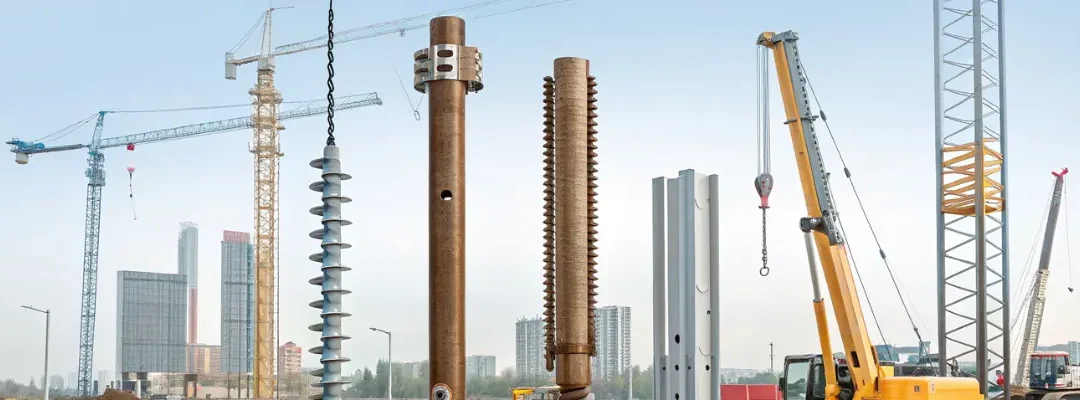Why Piling Matters in Construction
When constructing large buildings, bridges, or structures on weak or unstable soil, a strong foundation is essential. This is where piling in construction comes in. Piles transfer the load of the structure deep into the ground, reaching strong soil or rock layers that can support heavy loads.
In this guide, we’ll break down what piling is, the different types of piles, and where each type is used.
What Is Piling in Construction?
Piling is a type of deep foundation system that involves driving or drilling long, slender columns—called piles—into the ground to support structures.
Piles are usually made of concrete, steel, or timber, and are used when the topsoil lacks sufficient bearing capacity to carry the building load.
Main Categories of Piles
Piles are broadly classified into two categories based on how they transfer loads:
- End-Bearing Piles
- Transfer loads directly to hard strata (rock or dense soil).
- Work like columns resting on firm ground.
- Friction Piles
- Transfer loads through skin friction between pile surface and surrounding soil.
- Useful when hard strata is very deep.
Types of Piling in Construction
1. Driven Piles
- Inserted into the ground using hammers or vibratory drivers.
- Can be made of steel, precast concrete, or timber.
- Suitable for both friction and end-bearing applications.
Used in: Bridges, marine structures, industrial foundations.
2. Bored Piles (Cast-in-Situ Piles)
- Drilled into the ground and then filled with reinforced concrete.
- No vibration during installation → less disturbance to surrounding structures.
Used in: Urban construction, high-rise buildings, soft soils.
3. Precast Concrete Piles
- Manufactured in factories, then transported and driven into the site.
- High quality and uniform strength, but require heavy machinery for installation.
Used in: Large projects, marine structures.
4. Steel Piles
- Made of H-sections or tubular pipes.
- High load capacity and durability.
- Easy to splice for longer lengths.
Used in: Deep foundations, offshore structures, bridges.
5. Timber Piles
- Traditional piles made of treated wood.
- Cost-effective but limited to smaller loads and shorter lengths.
- Susceptible to decay if not protected.
Used in: Temporary structures, small bridges, low-rise buildings.
6. Composite Piles
- Combination of two materials (e.g., steel + concrete).
- Designed to utilize the advantages of each material.
Used in: Marine works, foundations exposed to groundwater.
7. Mini Piles (Micro Piles)
- Small-diameter piles (150–300 mm).
- Installed using lightweight rigs, even in restricted spaces.
- High strength despite small size.
Used in: Existing building foundation repairs, underpinning, seismic retrofitting.
Factors Affecting Choice of Pile
| Factor | Impact on Choice |
|---|---|
| Soil condition | Weak topsoil → deeper piles (friction piles) |
| Load type | Heavy vertical loads → end-bearing piles |
| Environmental sensitivity | Urban areas → bored piles (less vibration) |
| Budget & timeline | Timber is cheaper, steel is costlier but durable |
| Site accessibility | Precast piles need heavy transport/equipment |
Advantages of Piling
Provides stability on weak or waterlogged soils
Can support heavy and tall structures
Flexible in design (many materials and methods)
Can be used in underwater and offshore conditions
FAQs
Q: What’s the difference between pile and pier foundations?
A: Piles are slender columns driven deep into the soil, while piers are large-diameter shafts drilled and filled with concrete.
Q: Which pile is best for bridges?
A: Steel tubular piles and precast concrete piles are commonly used for bridge foundations.
Q: Are timber piles still used?
A: Yes, but mainly in small projects or temporary structures.

